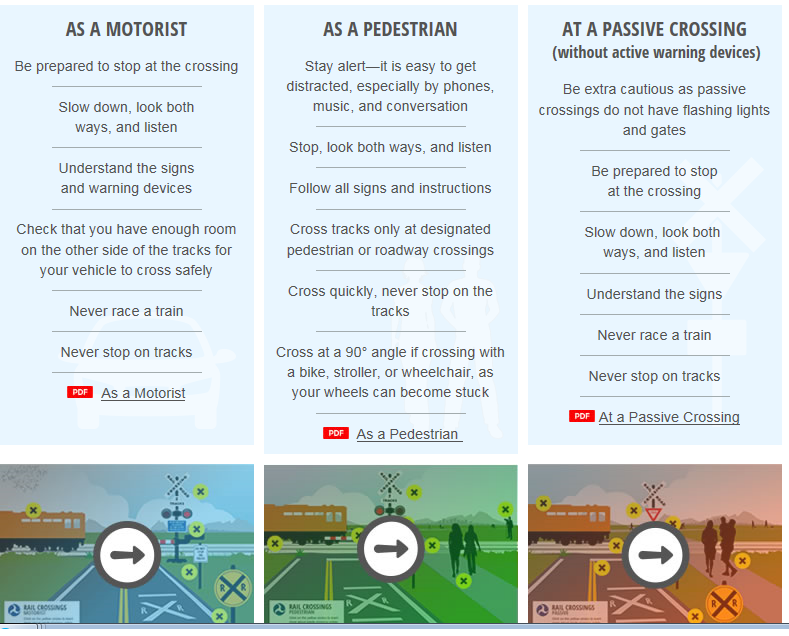Stop. Trains Can't.
The U.S. Department of Transportation’s Federal Railroad Administration (FRA) and National Highway Traffic Safety Administration (NHTSA) have launched a national railroad crossing safety ad campaign to increase public awareness around railroad tracks and reduce crossing deaths and injuries. Although accidents at railroad crossings are an old problem, the problem is easily avoidable. This ad is the latest in a three-year, focused effort to reverse the uptick in railroad crossing fatalities. Its message is simple: Stop. Trains can’t.
For more information, please visit: https://www.trafficsafetymarketing.gov/get-materials/rail-grade-crossing/stop-trains-cant.
Joint letter to Members of Congress from NHTSA Deputy Administrator Heidi King and FRA Administrator Ronald Batory.
Did you know…
About every three hours, a person or vehicle is hit by a train in the U.S.



Most, if not all, of these accidents can be prevented.
How can you help prevent these accidents?
By the Numbers: Railroad Crossing Safety
What FRA is doing to improve railroad crossing safety
- Awarding over $65 million through the Consolidated Rail Infrastructure and Safety Improvements (CRISI) grant program to invest in a wide range of projects to improve railroad safety, efficiency and reliability, which can include grade crossing improvement projects
- Initiating a Law Enforcement Strategies for Reducing Trespassing Pilot Grant Program to assist communities at risk for rail trespassing related incidents and fatalities
- Partnering with tech companies to add alerts of upcoming railroad crossings to map applications
- Testing intrusion detection technology to provide advanced warning to trains of a vehicle on tracks
- Establishing FRA’s Transportation Technology Center (TTC) in Pueblo, CO, as a center of Unmanned Aircraft Systems (UAS) research for railroad and first responder activities
- Partnering with Operation Lifesaver, Inc. on rail safety education initiatives to empower drivers to make safe choices at crossings

